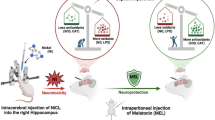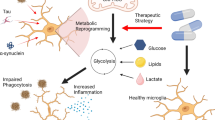Abstract
Excessive exposure to fluoride results in structural and functional damages to the central nervous system (CNS), and neurotoxicity of fluoride may be associated with neurodegenerative changes. Chronic microglial activation appears to cause neuronal damage through producing proinflammatory cytokines and is involved in many neurodegenerative disorders. It is not known about effects on microglia of fluoride. In the present study, healthy adult Wistar rats were exposed to 60 and 120 ppm fluoride in drinking water for 10 weeks, and control rats received deionized water. After 10 weeks, rats were sacrificed under anesthesia then apoptosis in neuron and inflammatory factors secreted by microglia were determined. We found that apoptosis of neurons in fluoride-treated rat brain increased and terminal deoxynucleotidyl transferase-mediated dUTP nick-end labeling (TUNEL)-positive immunofluorescence increased with increasing fluoride concentrations. Bax protein expression increased and Bcl-2 protein expression decreased in fluoride-treated rat brain compared with that of the control rat brain. The microglia in the hippocampus and cortex of fluoride-treated rats were activated by immunostaining with OX-42, a marker of activated microglia, and OX-42-positive microglia cells were more abundant in the hippocampus than in the cortex. The levels of IL-1β and IL-6 protein expression in OX-42-labeled microglial cells were significantly increased in the cortex and hippocampus of rats exposed to fluoride, and TNF-α immunoreactivity in microglial cells of the hippocampus was significantly higher in the 120 ppm fluoride-treated group than that in the control group. Our results indicate that fluoride induced neuron apoptosis and expressions of inflammatory factors by activating microglia in rat brain.








Similar content being viewed by others
References
Wang S, Wang Z, Cheng X, Li J, Sang Z, Zhang X, Han L, Qiao X et al (2007) Arsenic and fluoride exposure in drinking water: children’s IQ and growth in Shanyin County, Shanxi province, China. Environ Health Perspect 115(4):643–647
Trivedi MH, Verma RJ, Chinoy NJ, Patel RS, Sathawara NG (2007) Effect of high fluoride water on intelligence of school children in India. Fluoride 40:178–183
Xiang Q, Liang Y, Chen L, Wang C, Chen B, Chen X, Zhou M (2003) Effect of fluoride in drinking water on children’s intelligence. Fluoride 36:84–94
Tang Q, Du J, Ma H, Jian S, Zhou X (2008) Fluoride and children’s intelligence, a meta-analysis. Biol Trace Elem Res 126(1–3):115–120
Spittle B (1994) Psychopharmacology of fluoride: a review. Int Clin Psychopharmacol 9(2):79–82
Chioca LR, Raupp IM, Da Cunha C, Losso EM, Andreatini R (2008) Subchronic fluoride intake induces impairment in habituation and active avoidance tasks in rats. Eur J Pharmacol 579(1–3):196–201
Liu F, Ma J, Zhang H, Liu P, Liu YP, Xing B, Dang YH (2014) Fluoride exposure during development affects both cognition and emotion in mice. Physiol Behav 124:1–7
Guan Z, Wang Y, Xiao K, Dai D, Chen Y, Liu J, Sindelar P, Dallner G (1998) Influence of chronic fluorosis on membrane lipids in rat brain. Neurotoxicol Teratol 20(5):537–542
Shashi A (2003) Histopathological investigation of fluoride-induced neurotoxicity in rabbits. Fluoride 36:95–105
Zhang Z, Xu X, Shen X (2008) Effect of fluoride exposure on synaptic structure of brain areas related to learning-memory in mice. Fluoride 41:139–143
Zhang M, Wang A, He W, He P, Xu B, Xia T, Chen X, Yang K (2007) Effects of fluoride on the expression of NCAM, oxidative stress, and apoptosis in primary cultured hippocampal neurons. Toxicology 236(3):208–216
Adebayo OL, Shallie PD, Salau BA, Ajani EO, Adenuga GA (2013) Comparative study on the influence of fluoride on lipid peroxidation and antioxidants levels in the different brain regions of well-fed and protein undernourished rats. J Trace Elem Med Biol 27(4):370–374
Lee JH, Jung JY, Jeong YJ, Park JH, Yang KH, Choi NK, Kim SH, Kim WJ (2008) Involvement of both mitochondrial- and death receptor-dependent apoptotic pathways regulated by Bcl-2 family in sodium fluoride-induced apoptosis of the human gingival fibroblasts. Toxicology 243(3):340–347
Pal S, Sarkar C (2014) Protective effect of resveratrol on fluoride induced alteration in protein and nucleic acid metabolism, DNA damage and biogenic amines in rat brain. Environ Toxicol Pharmacol 38(2):684–699
Long Y, Wang Y, Chen J, Jiang S, Nordberg A, Guan Z (2002) Chronic fluoride toxicity decreases the number of nicotinic acetylcholine receptors in rat brain. Neurotoxicol Teratol 24(6):751–757
Pereira M, Dombrowski P, Losso E, Chioca L, DaCunhaC AR (2011) Memory impairment induced by sodium fluoride is associated with changes in brain monoamine levels. Neurotoxicol Res 19(1):55–62
Jiang C, Zhang S, Liu H, Guan Z, Zeng Q, Zhang C, Lei R, Xia T et al (2014) Low glucose utilization and neurodegenerative changes caused by sodium fluoride exposure in rat’s developmental brain. Neuromol Med 16(1):94–105
Bhatnagar M, Rao P, Sushma J, Bhatnagar R (2002) Neurotoxicity of fluoride: neurodegeneration in hippocampus of female mice. Indian J Exp Biol 40(5):546–554
Varner JA, Jensen KF, Horvath W, Isaacson RL (1998) Chronic administration of aluminium fluoride and sodium fluoride in rats in drinking water, alterations in neuronal and cerebrovascular integrity. Brain Res 784(1–2):284–298
Morales I, Guzman-Martinez L, Cerda-Troncoso C, Farias GA, Maccioni RB (2014) Neuroinflammation in the pathogenesis of Alzheimer’s disease. A rational framework for the search of novel therapeutic approaches. Front Cell Neurosci 8:112
Trabelsi M, Guermazi F, Zeghal N (2001) Effect of fluoride on thyroid function and cerebellar development in mice. Fluoride 34:165–173
Flores-Méndez M, Ramírez D, Alamillo N, Hernández-Kelly LC, Del Razo LM, Ortega A (2014) Fluoride exposure regulates the elongation phase of protein synthesis in cultured Bergmann glia cells. Toxicol Lett 229(1):126–133
Akinrinade ID, Memudu AE, Ogundele OM, Ajetunmobi OI (2015) Interplay of glia activation and oxidative stress formation in fluoride and aluminium exposure. Pathophysiology 22(1):39–48
Beynon SB, Walker FR (2012) Microglial activation in the injured and healthy brain: what are we really talking about? Practical and theoretical issues associated with the measurement of changes in microglial morphology. Neuroscience 225:162–171
Hanisch UK, Kettenmann H (2007) Microglia: active sensor and versatile effector cells in the normal and pathologic brain. Nat Neurosci 10(11):1387–1394
Perry VH (2004) The influence of systemic inflammation on inflammation in the brain: implications for chronic neurodegenerative disease. Brain Behav Immun 18(5):407–413
Saijo K, Winner B, Carson CT, Collier JG, Boyer L, Rosenfeld MG, Gage FH, Glass CK (2009) A Nurr1/CoREST pathway in microglia and astrocytes protects dopaminergic neurons from inflammation-induced death. Cell 137(1):47–59
Barrientos RM, Sprunger DB, Campeau S, Watkins LR, Rudy JW, Maier SF (2004) BDNF mRNA expression in rat hippocampus following contextual learning is blocked by intrahippocampal IL-1beta administration. J Neuroimmunol 155(1–2):119–126
Block ML, Hong JS (2005) Microglia and inflammation-mediated neurodegeneration: multiple triggers with a common mechanism. Prog Neurobiol 76(2):77–98
Yan L, Liu S, Wang C, Wang F, Song Y, Yan N, Xi S, Liu Z et al (2013) JNK and NADPH oxidase involved in fluoride-induced oxidative stress in BV-2 microglia cells. Mediat Inflamm 2013:895975
Zhang ZY, Han B, Qian C (2011) Rapid detection method for trace fluoride with microplate reader. Chin J Public Health 27:255–256 (in Chinese)
Sarkar C, Pal S, Das N, Dinda B (2014) Ameliorative effects of oleanolic acid on fluoride induced metabolic and oxidative dysfunctions in rat brain: experimental and biochemical studies. Food Chem Toxicol 66:224–236
Roos WP, Kaina B (2006) DNA damage-induced cell death by apoptosis. Trends Mol Med 12(9):440–450
Negrín G, Rubio S, Marrero MT, Quintana J, Eiroa JL, Triana J, Estévez F (2015) The eudesmanolide tanapsin from Tanacetum oshanahanii and its acetate induce cell death in human tumor cells through a mechanism dependent on reactive oxygen species. Phytomedicine 22(3):385–393
Liu YJ, Guan ZZ, Gao Q, Pei JJ (2011) Increased level of apoptosis in rat brains and SH-SY5Y cells exposed to excessive fluoride—a mechanism connected with activating JNK phosphorylation. Toxicol Lett 204(2–3):183–189
Harry GJ (2013) Microglia during development and aging. Pharmacol Ther 139(3):313–326
Parakalan R, Jiang B, Nimmi B, Janani M, Jayapal M, Lu J, Tay SS, Ling EA et al (2012) Transcriptome analysis of amoeboid and ramified microglia isolated from the corpus callosum of rat brain. BMC Neurosci 13:64
Sadasivan S, Pond BB, Pani AK, Qu C, Jiao Y, Smeyne RJ (2012) Methylphenidate exposure induces dopamine neuron loss and activation of microglia in the basal ganglia of mice. PLoS ONE 7:e33693
Smith JA, Das A, Ray SK, Banik NL (2012) Role of pro-inflammatory cytokines released from microglia in neurodegenerative diseases. Brain Res Bull 87(1):10–20
Zhang B, West EJ, Van KC, Gurkoff GG, Zhou J, Zhang XM, Kozikowski AP, Lyeth BG (2008) HDAC inhibitor increases histone H3 acetylation and reduces microglia inflammatory response following traumatic brain injury in rats. Brain Res 1226:181–191
Lawson LJ, Perry VH, Dri P, Gordon S (1990) Heterogeneity in the distribution and morphology of microglia in the normal adult mouse brain. Neuroscience 39(1):151–170
Leussis MP, Bolivar VJ (2006) Habituation in rodents: a review of behaviour, neurobiology and genetics. Neurosci Biobehav Rev 30(7):1045–1064
Basha PM, Sujitha NS (2012) Combined impact of exercise and temperature in learning and memory performance of fluoride toxicated rats. Biol Trace Elem Res 150(1–3):306–313
Ross FM, Allan SM, Rothwell NJ, Verkhratsky A (2003) A dual role for interleukin-1 in LTP in mouse hippocampal slices. J Neuroimmunol 144(1–2):61–67
Williamson LL, Sholar PW, Mistry RS, Smith SH, Bilbo SD (2011) Microglia and memory: modulation by early-life infection. J Neurosci 31(43):15511–15521
Barrientos RM, Frank MG, Hein AM, Higgins EA, Watkins LR, Rudy JW, Maier SF (2009) Time course of hippocampal IL-1 beta and memory consolidation impairments in aging rats following peripheral infection. Brain Behav Immun 23(1):46–54
Streit WJ (2010) Microglial activation and neuroinflammation in Alzheimer’s disease: a critical examination of recent history. Front Aging Neurosci 2:22
Furuya M, Miyaoka T, Tsumori T, Liaury K, Hashioka S, Wake R, Tsuchie K, Fukushima M et al (2013) Yokukansan promotes hippocampal neurogenesis associated with the suppression of activated microglia in Gunn rat. J Neuroinflammation 10:145
Brown GC, Neher JJ (2010) Inflammatory neurodegeneration and mechanisms of microglial killing of neurons. Mol Neurobiol 41(2–3):242–247
Iliev AI, Stringaris AK, Nau R, Neumann H (2004) Neuronal injury mediated via stimulation of microglial toll-like receptor-9 (TLR9). FASEB J 18(2):412–414
Park KM, Bowers WJ (2010) Tumor necrosis factor-alpha mediated signaling in neuronal homeostasis and dysfunction. Cell Signal 22(7):977–983
Kraft AD, McPherson CA, Harry GJ (2009) Heterogeneity of microglia and TNF signaling as determinants for neuronal death or survival. Neurotoxicology 30(5):785–793
McCoy MK, Tansey MG (2008) TNF signaling inhibition in the CNS: implications for normal brain function and neurodegenerative disease. J Neuroinflammation 5:45
Acknowledgments
This work was supported by the Research Fund for the Doctoral Program of Higher Education of China (No. 20112104110021).
Conflict of Interest
The authors declare that they have no competing interests.
Author information
Authors and Affiliations
Corresponding author
Rights and permissions
About this article
Cite this article
Yan, N., Liu, Y., Liu, S. et al. Fluoride-Induced Neuron Apoptosis and Expressions of Inflammatory Factors by Activating Microglia in Rat Brain. Mol Neurobiol 53, 4449–4460 (2016). https://doi.org/10.1007/s12035-015-9380-2
Received:
Accepted:
Published:
Issue Date:
DOI: https://doi.org/10.1007/s12035-015-9380-2




